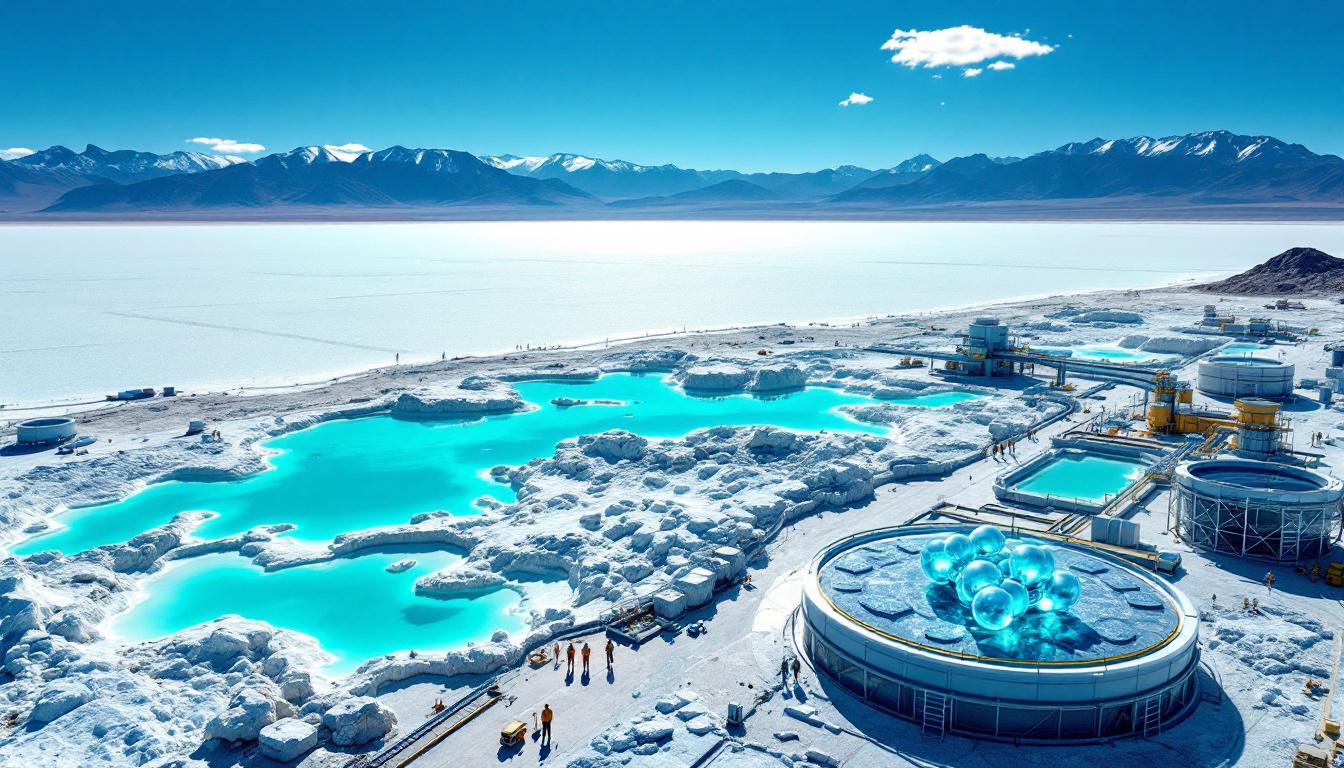Diamond Production by Country: Global Leaders in 2025
The global diamond industry is evolving rapidly as technological innovations and market shifts drive change. In particular, diamond production by country remains a critical benchmark for investment and growth. Analysts and investors monitor production volumes, quality metrics, and emerging markets with keen interest.
What Makes a Country a Top Diamond Producer?
Several critical factors determine a nation’s ranking in the diamond industry. These include:
- Geological factors: The presence of kimberlite pipes and alluvial deposits is fundamental.
- Mining infrastructure: Advanced extraction methods improve efficiency.
- Production volume: Annual carats produced form a primary ranking metric.
- Diamond value: Quality and market price often outweigh sheer quantity.
- Historical context: A nation's mining heritage influences current capabilities.
Furthermore, improvements in mining investments have modernised extraction techniques. In addition, policymakers refer to standards such as the jorc code to ensure best practices.
Russia: The World's Leading Diamond Producer
Russia continues to secure a leading position in global production. In 2023, the nation produced 37.3 million carats, generating nearly $3.6 billion. Although production volumes have slightly dropped from previous figures, the sheer scale of operations remains impressive. Analysts often compare these trends with recent data available via mining country stats.
The ALROSA group, a state-controlled enterprise, operates 12 open-pit mines. Notably, the Yakutia region in Siberia hosts the world’s largest mine by volume. Experts believe that despite a dip in output from 41.9 million carats in 2022, adherence to established guidelines supports long-term sustainability.
Botswana: Africa's Diamond Powerhouse
Botswana produced 25.1 million carats in 2023, valued at approximately $3.3 billion. With an average of $130.83 per carat, the nation continues to shine as a leader in quality. This slight growth from 24.5 million carats in 2022 reinforces the nation's status.
Since the advent of commercial mining in the 1970s, Botswana’s diamond industry has been pivotal to national economic growth. The government has successfully implemented rigorous feasibility studies to ensure that mining projects are economically sound. In addition, the industry contributes nearly 25% to GDP and 80% to export earnings.
Canada: North America's Diamond Giant
Canada recorded 16 million carats in 2023, generating about $1.5 billion. Despite a slight decrease from previous years, the sector is known for its ethical practices and quality output. Operating well-known mines such as Ekati, Diavik, and Snap Lake, Canada continues to be a formidable presence in the market.
Moreover, the nation’s commitment to efficient processing and strict quality control underlines its competitive edge. In some market segments, these high standards support premium pricing, reinforcing Canada’s reputation as a reliable source. For further global comparisons, many investors review commodities insights.
Angola: Rising African Diamond Producer
Angola produced 9.8 million carats in 2023, with total diamond value reaching $1.5 billion. With an average value of $157.06 per carat, Angola’s high-quality stones have garnered global recognition. Growing from 8.8 million carats in 2022, the country’s rapid expansion has captured industry attention.
The nation benefits from exceptionally rich geological formations that yield premium stones. Experts predict that if production growth continues and political stability is maintained, Angola may soon challenge established markets. In addition, recent evaluations suggest that efficient mining practices are propelling Angola forward.
Democratic Republic of Congo (DRC): Informal Mining Powerhouse
The DRC produced 8.3 million carats in 2023 but managed only $65 million in total diamond value. With an average of $7.78 per carat, the disparity between volume and economic worth is stark. Production has decreased from 9.9 million carats in 2022, exposing numerous challenges.
The industry is dominated by informal mining, engaging over 500,000 workers in small-scale operations. Despite being the third-largest producer in Africa by volume, the low value highlights issues with quality and processing capacity. Consequently, many call for enhanced governmental oversight and modernisation.
South Africa: The Original Diamond Powerhouse
South Africa, known as the birthplace of modern diamond mining, produced 5.9 million carats in 2023. The output was valued at $794 million, and the average value per carat stood at $134.75. This represents a significant decline from 9.7 million carats in 2022.
The historic significance of the Kimberley discovery in 1866 laid the foundation for the industry. However, ongoing exploration and modern extraction techniques are vital for revitalisation. Despite lower volumes, the country is addressing its environmental impact through initiatives that tackle decarbonisation challenges.
How Do Diamond Values Vary by Country?
Variations in diamond value are striking when comparing global leaders:
-
Highest Value-Per-Carat Producers:
• Namibia: £517.35 per carat, thanks to rich marine deposits.
• Lesotho: £294.03 per carat, celebrated for large, high-quality stones.
• Liberia: £322.54 per carat, focusing on premium gems.
• Brazil: £318.26 per carat, specialises in coloured diamonds. -
Lowest Value-Per-Carat Producers:
• DR Congo: £7.78 per carat, mostly industrial-grade stones.
• Ivory Coast: £41.36 per carat, with size and quality constraints.
• Ghana: £47.78 per carat, facing deposit quality challenges.
• Venezuela: £60 per carat, limited by infrastructure and politics.
Furthermore, detailed overviews found in diamond production data offer comprehensive insights into these trends.
Emerging Diamond Producers to Watch
Zimbabwe and Namibia are poised for significant future growth. Zimbabwe produced 4.9 million carats in 2023, reflecting an increase from 4.5 million carats in 2022. The Marange diamond fields hold untapped potential that could substantially raise output.
Namibia produced 2.4 million carats in 2023 yet generated an astonishing $1.2 billion. Its marine mining operations ensure the highest value-per-carat at £517.35. Investors continue to monitor both nations with enthusiasm and optimism.
What Factors Determine Diamond Value?
Several key components influence pricing in the diamond market:
- Carat weight: Larger stones see exponential value increases.
- Quality: Clarity, colour, and cut are crucial to pricing.
- Mining method: Marine and deep mining often yield superior stones.
- Technology: Advanced processing preserves stone integrity during extraction.
- Market demand: Trends and consumer preferences drive price fluctuations.
In addition, countries invest heavily in research and development to fine-tune extraction and processing methods.
How Has Global Diamond Production Changed?
Global output reached 111.5 million carats in 2023, with total value at $12.7 billion. This marks a contraction from 120 million carats and a value of $16 billion in 2022. Such changes are attributed to resource depletion, evolving consumer trends, and the rise of lab-grown diamonds.
Furthermore, shifting production patterns indicate a move away from traditional mining regions. Although Russia maintains a dominant stance, African nations such as Angola and Botswana are showing promising trends. An external look at mining country stats further illustrates these shifts.
FAQ About Diamond Production
Which country produces the most valuable diamonds?
Russia leads in volume, but Namibia delivers the highest value per carat. Analysts note that comparing quantity with quality is crucial for proper industry evaluation.
How has production changed in recent years?
Global numbers fell from 120 million carats in 2022 to 111.5 million in 2023. This decline is due to both resource challenges and the competitive pressure from lab-grown diamonds.
Which nations are increasing their mining output?
African countries, especially Angola and Botswana, continue to expand. Their growth is driven by rich geological deposits and investments in modern techniques. Notably, in analysing diamond production by country, experts stress the role of innovation.
What determines a diamond's market value?
The value rests on the 4Cs: carat, cut, clarity, and colour. Each element contributes significantly to setting a diamond’s price and market desirability.
In conclusion, the future and sustainability of diamond production by country depend on technological advances, careful resource management, and market adaptability. With strategic investments and rigorous quality control, the industry is poised to overcome emerging challenges and capitalise on new opportunities.
Is Your Investment in the Next Diamond Giant on Track?
Gain the upper hand in diamond investments with Discovery Alert’s real-time notifications on major ASX mineral discoveries, powered by the Discovery IQ model. Stay ahead by understanding potential gems of success; explore our discoveries page to witness historic returns and start your 30-day free trial today.




